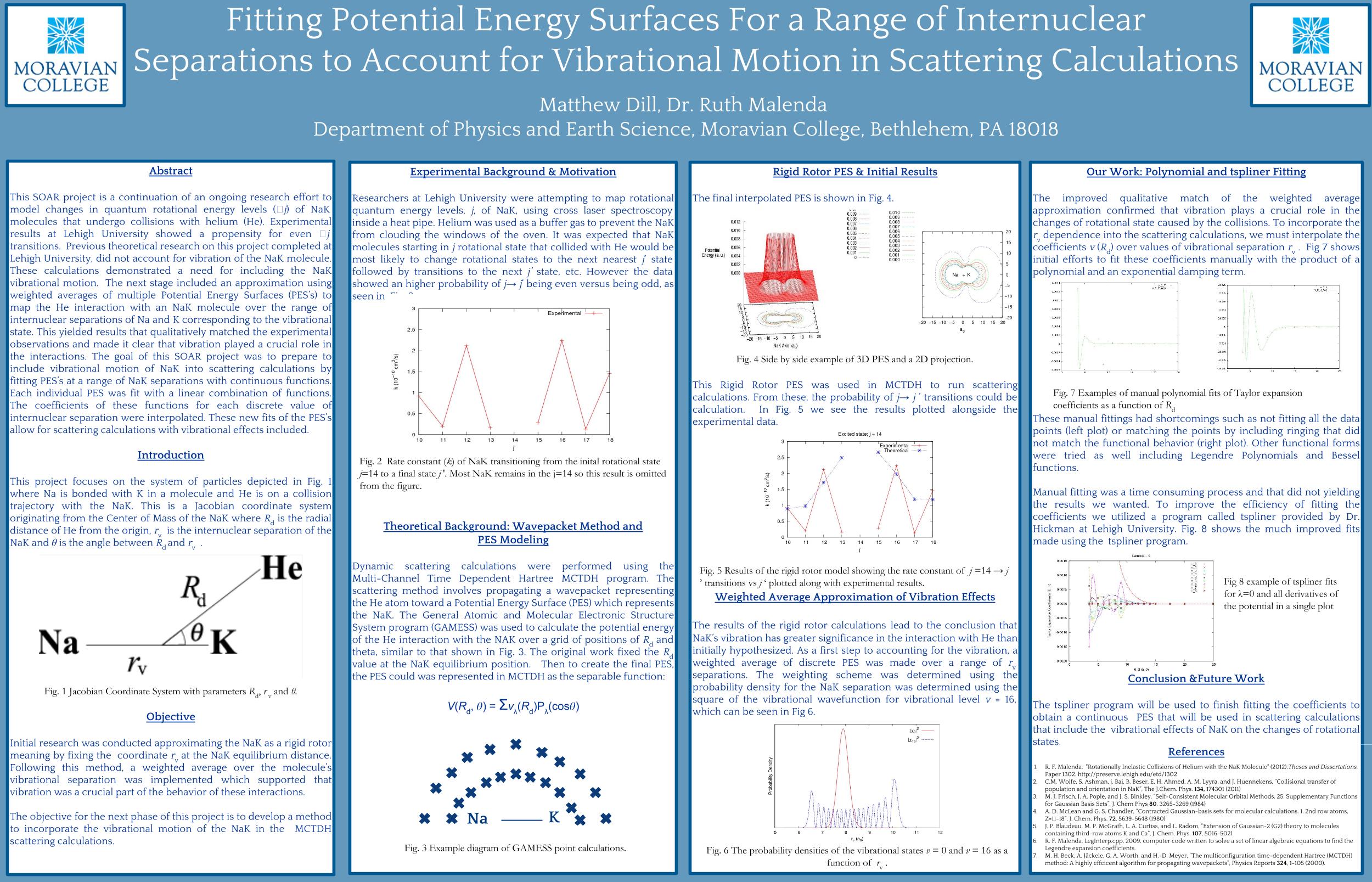Research Publications
Fitting Potential Energy Surfaces For a Range of Internuclear Separations to Account for Vibrational Motion in Scattering Calculations

This SOAR project is a continuation of an ongoing research effort to model changes in quantum rotational energy levels (ᐃj) of NaK molecules that undergo collisions with helium (He). Experimental results at Lehigh University showed a propensity for even ᐃj transitions. Previous theoretical research on this project completed at Lehigh University, did not account for vibration of the NaK molecule. These calculations demonstrated a need for including the NaK vibrational motion. The next stage included an approximation using weighted averages of multiple Potential Energy Surfaces (PES’s) to map the He interaction with an NaK molecule over the range of internuclear separations of Na and K corresponding to the vibrational state. This yielded results that qualitatively matched the experimental observations and made it clear that vibration played a crucial role in the interactions. The goal of this SOAR project was to prepare to include vibrational motion of NaK into scattering calculations by fitting PES’s at a range of NaK separations with continuous functions. Each individual PES was fit with a linear combination of functions. The coefficients of these functions for each discrete value of internuclear separation were interpolated. These new fits of the PES’s allow for scattering calculations with vibrational effects included.
Computer Interfacing of a Granular Material Experiment

The physics of granular material helps understand various different phenomenons which are still being studied today by physicists. Phenomenon that can be observe are avalanches of a sandpile where the sand acts as the granular material. An experiment previously conducted by Ryan Cress in 2008 at Moravian University attempted to observe the inertial and frictional effects due to mass differences.
Cress’s research was improved within two main areas of the experimental set-up including the counting and pellet dropping mechanisms. The use of a balance and a data interface enabled a more efficient way to observe the magnitude of the avalanches associated with the counting mechanism.The pellet dropping mechanism was altered in order to allow the pile of pellets to stabilize before an additional pellet was dropped. With these changes, different inertial and frictional effects as well as avalanche frequencies are to be observed.
